Essential Plants That Attract Pollinators to Your Garden
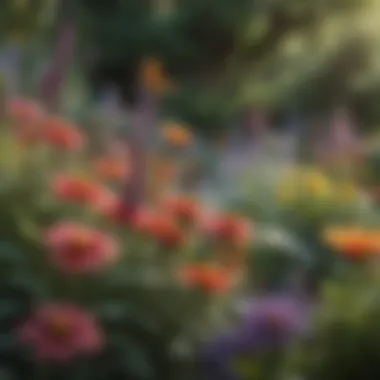
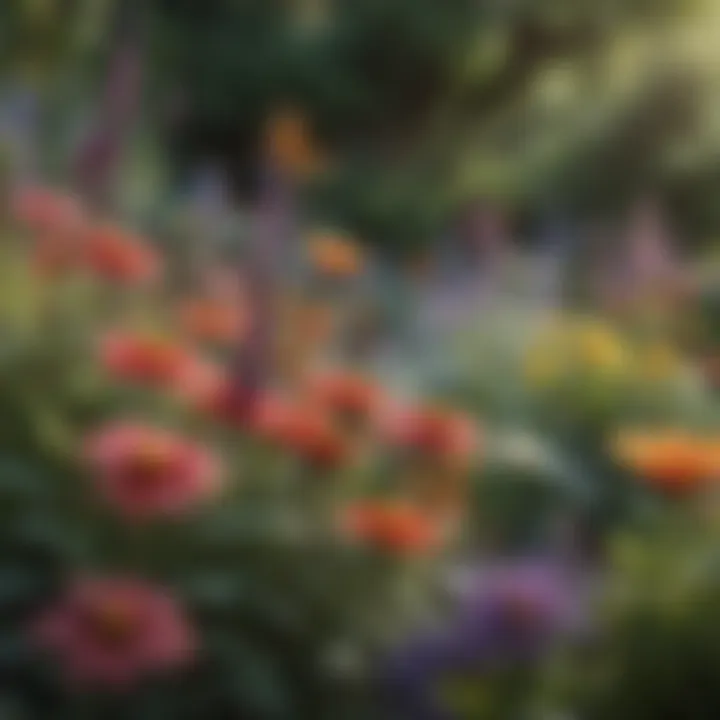
Intro
The relationship between plants and pollinators is intricate and essential for a thriving ecosystem. As a gardener or a homeowner with a passion for nature, understanding which plants can draw pollinators to your garden is crucial. Pollinators, such as bees, butterflies, and hummingbirds, are not just beautiful additions to any outdoor space but are also vital for the reproduction of many flowering plants. By cultivating a garden rich in biodiversity, one can actively participate in enhancing ecological balance. Selecting the right plants is a key step toward creating an inviting and sustainable habitat.
This guide will provide insights into the most effective plants to attract pollinators while emphasizing their ecological significance. Furthermore, practical advice will be offered on how to incorporate these plants into your garden design, ensuring harmony with nature and enhancing your gardening experience.
Gardening Know-How
Plant Care Guides
To successfully attract pollinators, one must choose plants that align with the specific needs of different species. Certain plants provide nectar, while others offer pollen, making the selection process crucial. Here are several types of plants that can be considered:
- Bee Balm (Monarda didyma): This plant is known for its vibrant red and purple flowers, which attract hummingbirds and various bee species.
- Lavender (Lavandula): Lavender not only offers fragrance but also provides long-lasting blooms that draw bees and butterflies.
- Echinacea (Echinacea purpurea): Commonly known as coneflower, it supports many pollinator species with its open blooms and easy accessibility.
When planting these species, provide the proper sunlight, soil type, and water to ensure their healthy growth. Regular monitoring for pests will also be important for their vitality, allowing them to flourish in a way that naturally invites pollinators.
Seasonal Gardening Tips
The timing of when you plant is just as important as what you plant. Here are some tips to maximize your garden's appeal to pollinators throughout the seasons:
- Spring: Focus on early bloomers like crocus and hyacinth to provide resources for pollinators emerging from hibernation.
- Summer: Incorporate heat-loving plants like sunflowers and zinnias, which can sustain a variety of pollinators during warmer months.
- Fall: Plant asters and goldenrods to extend the blooming period, ensuring that food sources remain available until winter.
DIY Garden Projects
Creating an environment that encourages pollinators can be a rewarding project. A few simple suggestions are:
- Pollinator Garden Bed: Designate a specific area in your garden as a pollinator haven by planting a mix of the species mentioned above.
- Water Source: Incorporate a shallow water dish with pebbles for pollinators to land on while drinking.
- Bee Hotel: Build or buy bee hotels to provide shelter for solitary bees, contributing to a welcoming habitat.
Investing time in understanding plants and their roles can yield a garden that not only looks appealing but supports vital environmental functions.
By thoughtfully selecting plants and creating a welcoming environment, any garden can become a sanctuary for pollinators. This not only enhances the beauty of your home but also supports ecological health and contributes to the sustainability of our natural world.
Prologue to Pollinators
Understanding pollinators is crucial for any attempt to cultivate a thriving garden or maintain ecological balance. These creatures play an indispensable role in the life cycle of many plants. Their activities ensure that plants reproduce, leading to the growth of fruits, seeds, and vegetables that humans also depend on. By highlighting the significance of these organisms, we can appreciate their complex relationship with plants, and ultimately, our food supply.
Definition and Types of Pollinators
Pollinators are animals that transfer pollen from one flower to another, enabling fertilization and the production of seeds. They encompass a variety of species including bees, butterflies, birds, bats, and even some insects like beetles. Among these, bees are often considered the most effective due to their specialized anatomy and behavioral patterns. There are two main types of pollinators: generalists and specialists. Generalists, such as honeybees, visit a wide range of plants, while specialists might only pollinate specific flowers. Understanding these distinctions is essential for selecting the right plants to attract them.
Importance of Pollinators in Ecosystems
The role of pollinators extends far beyond just assisting plants in reproduction. They contribute to the biodiversity of ecosystems, helping to ensure a variety of flora continues to thrive. This is critical for maintaining food webs where numerous species depend on flowering plants for sustenance.
Pollinators also help in the production of about one-third of the food that we consume. Without them, many crops would face significant declines in yield. This decline could lead to food shortages, increased prices, and a drop in food variety available to consumers. Their activities ultimately support ecosystem health and stability.
"A healthy population of pollinators is essential for a robust ecosystem, directly impacting food security and the health of our environment."
Moreover, the decline of pollinator populations due to habitat loss, pesticide use, and climate change poses severe risks. These challenges necessitate urgent actions to protect their habitats and encourage their populations. Supporting pollinators does not only foster better gardens but also promotes a sustainable and healthy ecosystem overall.
The Role of Plants in Attracting Pollinators
Plants play a crucial role in the lifecycle of pollinators. They are not just passive elements in the ecosystem; rather, they actively provide essential resources needed by various pollinators. Understanding this intricate relationship is vital for anyone interested in creating a healthy garden that welcomes these beneficial species.
How Plants Attract Pollinators
Plants attract pollinators through various mechanisms related to their physical and chemical traits. One of the most obvious factors is color. Brightly colored flowers signal to pollinators like bees, butterflies, and hummingbirds, drawing their attention. The shape and structure of flowers are also important. Some species develop tubular flowers, which cater specifically to hummingbirds, while broader flowers are more suited for bees and butterflies.
In addition to visual cues, scents emitted by flowers also play a significant role. Fragrant plants often release specific volatile compounds that act as signals, inviting pollinators from a distance. Nectar, a sugary liquid produced by flowers, serves as an incentive for pollinators to visit. Both the quantity and quality of nectar are paramount. Pollinators often learn to associate certain flower types with reliable food sources, leading to repeated visits.
Key attractants include:
- Color: Bright hues like yellow, blue, and purple attract attention.
- Shape: Different structures cater to specific pollinator types.
- Scent: Volatile organic compounds provide olfactory signals.
- Nectar Availability: A rich supply encourages frequent visits.
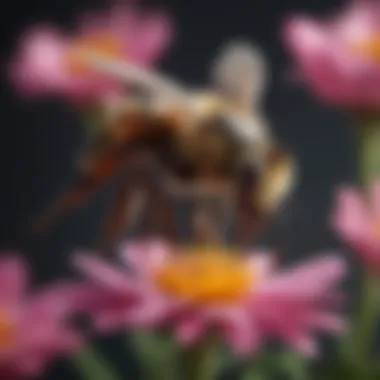
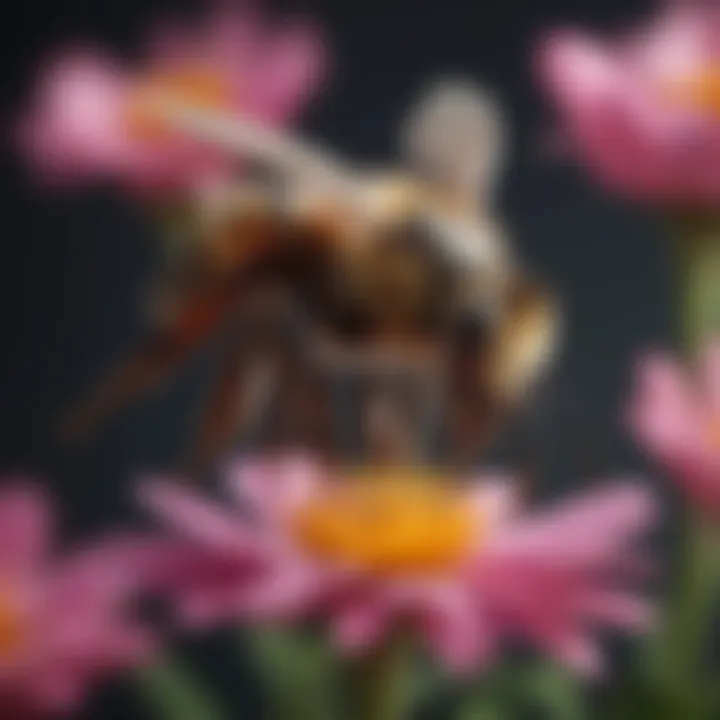
Pollinator-Friendly Plant Characteristics
Not all plants are created equal when it comes to attracting pollinators. Certain characteristics make plants more appealing and beneficial to these creatures. Pollinator-friendly plants generally provide abundant nectar and pollen, which sustains the lifecycle of pollinators. Plants should be rich in diversity, offering long blooming periods to ensure a consistent food source throughout the growing season.
Additionally, native plants often have evolved alongside local pollinator populations. This coexistence leads to improved compatibility, as native species are generally more efficient at attracting and supporting local pollinators. The growing interest in organic methods of gardening also promotes the use of plants that thrive without chemical pesticides or fertilizers, thus ensuring a safer environment for pollinators.
Essential characteristics of pollinator-friendly plants include:
- Nectar and Pollen Production: Providing food sources.
- Flower Diversity: Different species attract various pollinators.
- Seasonal Blooming: Ensuring year-round food availability.
- Native Species: Supporting local ecosystems.
"Plants are not merely a source of beauty; they are lifelines for the creatures that enable our ecosystems to flourish."
By selecting plants that embody these characteristics, homeowners, gardeners, and enthusiasts can create an inviting atmosphere for pollinators, ultimately fostering not just a vibrant garden but a thriving ecosystem.
Types of Pollinator-Attracting Plants
Flowering Plants
Flowering plants are perhaps the most recognized category of pollinator-attracting flora. Their visual appeal lies in vibrant flowers that release enticing scents. These features lure pollinators to extract nectar and inadvertently facilitate pollination.
Some common flowering plants known for attracting pollinators include:
- Sunflowers: Their large heads serve as landing pads, providing ample space for bees.
- Lavender: This plant emits a strong fragrance, captivating bees and butterflies alike.
- Asters: Blooming in late summer, these provide food when many other plants have finished flowering.
Selecting plants that bloom in different seasons ensures a continuous food source for pollinators throughout the year.
Herbs and Edibles
Herbs and edible plants do more than enhance culinary experiences; they also attract numerous pollinators. Many herbs produce flowers that bees and other insects find attractive. These plants not only support pollinators but also serve functional purposes in the kitchen.
Consider growing:
- Basil: Its flowers attract a variety of pollinators, adding beauty to the herb garden.
- Thyme: This herb produces tiny flowers favored by bees.
- Chives: In addition to their culinary use, their purple flowers are a delightful attraction for pollinators.
Having a section in your garden dedicated to herbs can create a multi-functional space that draws vital pollinator activity.
Native Plants
Incorporating native plants into your garden is one of the most effective ways to attract local pollinators. Native plants are well-adapted to the local climate and soil conditions, requiring less maintenance and resources than non-native species. Furthermore, they provide the specific types of nectar and pollen that local pollinators have evolved to consume.
Some notable native plants include:
- Coneflowers: Their sturdy structure and vibrant colors attract various bee species.
- Black-eyed Susans: Known for their durability and ease of growth, they provide food for many pollinators.
- Milkweed: Essential for Monarch butterflies, this plant hosts both caterpillars and adult butterflies.
Utilizing native plants supports local biodiversity while ensuring that your garden remains an inviting habitat for the local pollinator populations.
Sunflowers
Sunflowers are commonly recognized for their impressive size and vibrant colors. These plants not only add visual appeal but also draw numerous pollinators such as bees and butterflies. The structure of sunflower blooms is particularly beneficial; their large, round heads provide ample landing space for insects.
Growing sunflowers can offer many benefits:
- They thrive in full sunlight, making them easy to grow in various regions.
- Their seeds can be harvested for food, providing a secondary benefit for gardeners.
- Sunflowers are known to attract a plethora of other wildlife, creating a diverse ecosystem.
By incorporating sunflowers into your garden, you can create an inviting space for various pollinators.
Lavender
Lavender is esteemed not just for its fragrance but also for its efficacy in attracting pollinators. The tiny purple flowers bloom profusely on tall spikes, providing easy access for insects. Bees, in particular, are drawn to the strong scent and nectar of lavender.
Factors that make lavender a preferred choice include:
- Drought-resistant: Lavender requires less water once established, making it a sustainable option for gardens.
- Versatility: It can thrive in gardens, borders, or even in pots, enhancing any area visually.
- Culinary uses: Beyond attracting pollinators, lavender can be used in cooking and baking, adding further value for gardeners.
This plant’s role extends beyond mere aesthetics, offering benefits to biodiversity and human uses alike.
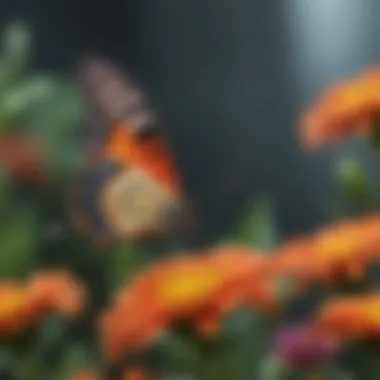
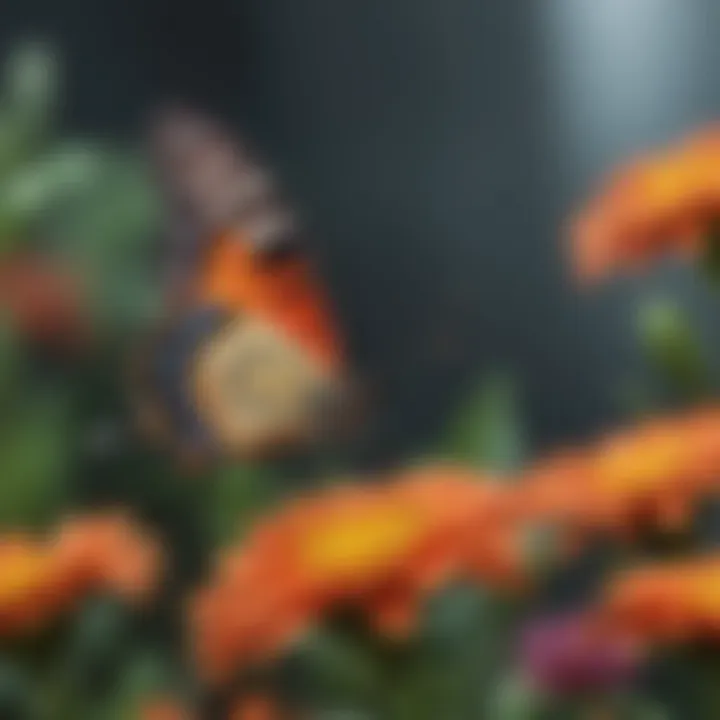
Asters
Asters bloom late in the season, making them a vital food source for pollinators when other plants have finished flowering. Their varied colors and shapes appeal to many species, particularly bees and butterflies.
Key considerations for asters include:
- They prefer well-drained soil and full to partial sunlight, making them adaptable.
- Aster flowers vary in color, which can add diversity to your landscape.
- Their long blooming period helps support pollinators as they prepare for winter.
In a garden setting, asters can create a spectrum of colors and serve as a late-season food source, ensuring that pollinators have resources until the first frosts.
Coneflowers
Coneflowers, commonly known as Echinacea, are highly resilient plants that attract many pollinators. Their distinctive shape makes them particularly appealing to butterflies. The firm petals provide stability, allowing insects to land and feed without difficulty.
Benefits of coneflowers include:
- Low maintenance: They require minimal care, ideal for homeowners seeking a low-effort garden.
- Medicinal properties: Coneflowers have been recognized for their health benefits, adding an extra layer of usefulness.
- Long-lasting blooms: They can bloom from early summer into fall, offering a consistent food source for pollinators.
Incorporating coneflowers in gardens not only enhances visual interest but also effectively supports local bee populations and other pollinators searching for sustenance.
Designing a Pollinator-Friendly Garden
Creating a pollinator-friendly garden is crucial for those who wish to support the environment and enhance local biodiversity. The presence of diverse plant species not only benefits pollinators but also enriches the overall garden experience. When done correctly, this approach can result in vibrant ecosystems that provide essential habitats. From bees to butterflies, the right garden design attracts different species, ensuring ecological balance.
Creating Diverse Planting Schemes
A diverse planting scheme is vital for attracting various pollinators. Planting a mix of flowers, herbs, and shrubs can make your garden more appealing to these creatures. It is beneficial to include native plants, as they are well-suited to local pollinator species and often require less maintenance.
- Consider bloom times: Select plants that bloom at different times throughout the year. This ensures a continuous food source from spring to fall.
- Variety of colors and shapes: Choose flowers with various colors, shapes, and sizes. Some pollinators prefer tubular flowers, while others are drawn to flat heads that provide easy access to nectar.
- Group plants: Planting in clusters rather than isolating plants can attract more pollinators. Groups of the same species allow for quicker foraging.
Optimal Placement of Plants
The placement of your plants can significantly influence the success of your garden in attracting pollinators. Optimizing plant location involves considering light, shelter, and accessibility for pollinators.
- Sunshine matters: Most flowering plants require at least six hours of sunlight per day. Ensure that sun-loving varieties are placed in bright areas.
- Wind protection: Utilize natural hedges or taller plants to shield delicate flowers from strong winds, which may deter some pollinators.
- Water sources: Including shallow dishes with water can attract thirsty pollinators. Ensure these are positioned near the flowering plants.
Seasonal Considerations
Understanding the seasonal needs of plants and pollinators is critical. Different species of pollinators are active at various times of the year. Thus, selecting plants that cater to these timelines can significantly enhance your garden’s effectiveness.
- Early bloomers: Plant species such as crocus and snowdrop can provide food for some of the first bees emerging in spring.
- Mid-season varieties: When bee populations peak in summer, flowers like echinacea and bee balm can be extremely advantageous.
- Late bloomers: Include plants that flower in the fall, such as goldenrod and asters, which offer sustenance for pollinators preparing for winter.
Creating a pollinator-friendly garden involves thoughtful planning and a commitment to maintaining diverse and healthy plant life. By considering these factors, gardeners can play a direct role in sustaining and enriching pollinator populations.
Maintaining a Pollinator Habitat
Maintaining a pollinator habitat is crucial for sustaining not only the populations of these essential insects but also the overall health of our ecosystems. Creating an environment that supports pollinators involves a range of practices intended to provide food sources, shelter, and safe conditions for these creatures. The importance of maintaining such a habitat cannot be overstated, as it leads to increased biodiversity, improved pollination rates for crops and wild plants, and a balanced ecosystem where various species can coexist.
Sustainable Gardening Practices
Sustainable gardening practices are integral to maintaining a pollinator-friendly habitat. These practices focus on using methods that are environmentally sound and minimally disruptive to local ecosystems. Here are some key practices to consider:
- Native plants: Utilizing plants that are native to your region can greatly benefit local pollinators. Native species are better adapted to the local climate, soil conditions, and pollinator species than non-native plants.
- Water sources: Providing a clean water source is also important. Small water features, like bird baths or shallow bowls with pebbles, can attract various pollinators who need to hydrate.
- Organic gardening: Avoiding the use of synthetic fertilizers and pesticides protects pollinators from harmful chemicals. Instead, focus on organic methods such as composting and natural pest deterrents.
- Diversity in flora: A diverse array of plants ensures that there is something blooming for different pollinators throughout the growing season. This helps to sustain them year-round.
By adopting these sustainable gardening practices, the health and viability of pollinator populations can be effectively supported.
Pesticide Minimization
Minimizing the use of pesticides is another critical aspect of maintaining a healthy pollinator habitat. Pesticides can have detrimental effects on bees, butterflies, and other pollinators, often leading to decreased populations. Here are some strategies to reduce pesticide impact:
- Integrated Pest Management (IPM): This approach uses a combination of biological, cultural, and mechanical controls alongside minimal chemical use. By focusing on preventing pest problems rather than reacting to them, IPM can reduce the need for pesticides.
- Timing of applications: If pesticides must be used, applying them in the evening when pollinators are less active can minimize exposure. Choosing selective pesticides that target specific pests can also help decrease harm to beneficial insects.
- Natural alternatives: Consider using natural pest control methods such as introducing beneficial insects (e.g., ladybugs) that prey on harmful species or using plant extracts known to deter pests without harming pollinators.
Challenges Facing Pollinators
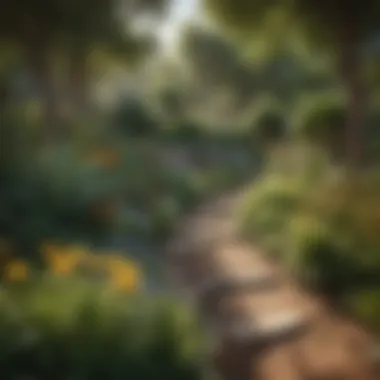

Understanding the challenges pollinators face is essential for fostering their populations. Without addressing these obstacles, our efforts to create pollinator-friendly gardens might not yield the desired results. Both habitat loss and climate change significantly impact these crucial species. By exploring these challenges in detail, we gain insight into actions that can be taken to support pollinator health effectively.
Habitat Loss
Habitat loss refers to the destruction or alteration of the natural environment necessary for pollinators to live and thrive. This often occurs due to urban development, agricultural expansion, and land clearing practices. In particular, the conversion of wild areas into farmland or urban spaces significantly reduces the floral diversity that supports pollinators like bees and butterflies.
The reduction of native plants not only deprives pollinators of nectar and pollen sources but also diminishes nesting sites. Many pollinators depend on a variety of plants, and when these are removed, their food sources vanish. Some critical points regarding habitat loss include:
- Fragmentation: Smaller, isolated patches of habitat cannot sustain healthy pollinator populations due to limited resources.
- Monoculture Farming: Large fields of single crops provide inadequate forage, failing to meet the diverse needs of different pollinator species.
- Pesticide Use: Chemical treatments in agricultural practices further eliminate plants that support pollinators and directly harm these insects.
To combat habitat loss, various strategies can be implemented, such as:
- Planting native species in gardens that provide food for local pollinators.
- Supporting local conservation efforts to protect natural habitats from development.
- Promoting sustainable agricultural practices that prioritize biodiversity.
Climate Change Impacts
Climate change presents a more complex challenge as it affects pollinators on several fronts. Changes in temperature and precipitation patterns can disrupt the delicate timing between plant blooming periods and pollinator activity. As seasons shift, many plants may bloom earlier or later than their traditional schedules. If pollinators do not adapt to these changes, it could lead to mismatches between when flowers provide food and when pollinators are active.
Some impacts of climate change on pollinators include:
- Range Shifts: As climates become warmer, some pollinators may move to new areas in search of suitable habitats, potentially leading to declines in their original locations.
- Population Declines: Increased frequency of extreme weather events, such as storms and heatwaves, can reduce populations of sensitive species.
- Altered Flowering Patterns: Climate change can cause key plants to bloom at different times, making it difficult for pollinators to find food.
Addressing the impacts of climate change requires a multifaceted approach:
- Implementing climate-responsive gardening practices that consider seasonal changes.
- Preserving diverse ecosystems that can withstand shifts in climate.
- Advocating for policies that target greenhouse gas reductions to help stabilize climatic conditions.
"By understanding these challenges, gardeners and conservationists can formulate effective strategies to build resilience among pollinator communities."
The Connection Between Pollinators and Food Supply
Pollinators play an essential role in food production. Without their efforts, many crops would fail to reproduce. This connection is vital in understanding how pollinators direct influence agricultural yields and, consequently, food availability.
Economic Importance
The economic impact of pollinators cannot be overstated. They are responsible for the pollination of about one-third of the food we eat. This includes crucial crops such as apples, almonds, berries, and various vegetables. The value of these pollination services runs into billions of dollars each year, contributing significantly to farmers' incomes and the agricultural sector overall.
More specifically, fruits and vegetables that are dependent on insect pollinators tend to sell at higher prices. Therefore, an abundant pollinator population can improve crop reliability and marketability. Additionally, the decrease in pollinator numbers could lead to increased prices for these foods due to lower supply, ultimately affecting consumers.
Linking Biodiversity with Agriculture
Biodiversity in agricultural settings is closely intertwined with the health of pollinator populations. A diverse range of plants in a garden or farm increases the variety of food sources available for pollinators, which in turn encourages their presence.
When multiple species of plants are cultivated, it supports different pollinators and enhances their foraging behavior. For example, having flowering plants of various heights and bloom times attracts a wider variety of pollinators. This ecological interaction leads to more robust ecosystems, which can combat diseases and pests naturally.
Incorporating a mix of native plants alongside crops creates a hospitable environment. This approach not only attracts pollinators but also improves soil health and the overall resilience of agricultural systems. Farmers who embrace biodiversity can potentially improve their yields and sustainability.
"Sustaining pollinator health is vital for agricultural success and biodiversity conservation."
The interplay between pollinators and agriculture solidifies the concept that protecting these vital species and enhancing biodiversity can lead to a more secure food supply. Home gardeners, meanwhile, can contribute by planting a range of pollinator-friendly species, thus promoting overall ecological balance in their small plots.
Finale
Summary of Pollinator Benefits
Pollinators contribute profoundly to the environment and agriculture. Here are some key benefits that underline their importance:
- Biodiversity Enhancement: Pollinators help maintain the genetic diversity of flowering plants.
- Food Production: Many fruits, vegetables, and nuts depend on pollinators for their growth. This links directly to human food supply and nutrition.
- Economic Support: The agricultural sector, reliant on these creatures, supports millions of jobs worldwide.
Pollinators are integral players in the agricultural processes that underpin global food security.
By choosing the right plants, gardeners can create inviting habitats that promote pollinator health and activity. Though not always visible, the web of life interconnects pollinators with our own resource security and quality of life.
Encouraging Action for Pollinator Health
Individuals can take several steps to support pollinator health in their local communities:
- Plant Native Species: Incorporate native plants that are adapted to local pollinators, ensuring they have resources throughout the growing season.
- Limit Pesticide Use: Reducing or eliminating pesticide applications can create a safer environment for pollinators.
- Create Pollinator Habitats: Small changes, such as adding a water source or a nesting area, can make significant impacts on pollinator populations.
- Educate Others: Share knowledge about the importance of pollinators among neighbors and community groups to increase awareness and action.
As homeowners and gardening enthusiasts, taking actionable steps will not only benefit gardens but also contribute to a larger ecological balance, supporting the health of pollinators.
Being mindful of these aspects is what will engender a future enriched by thriving biodiversity.







